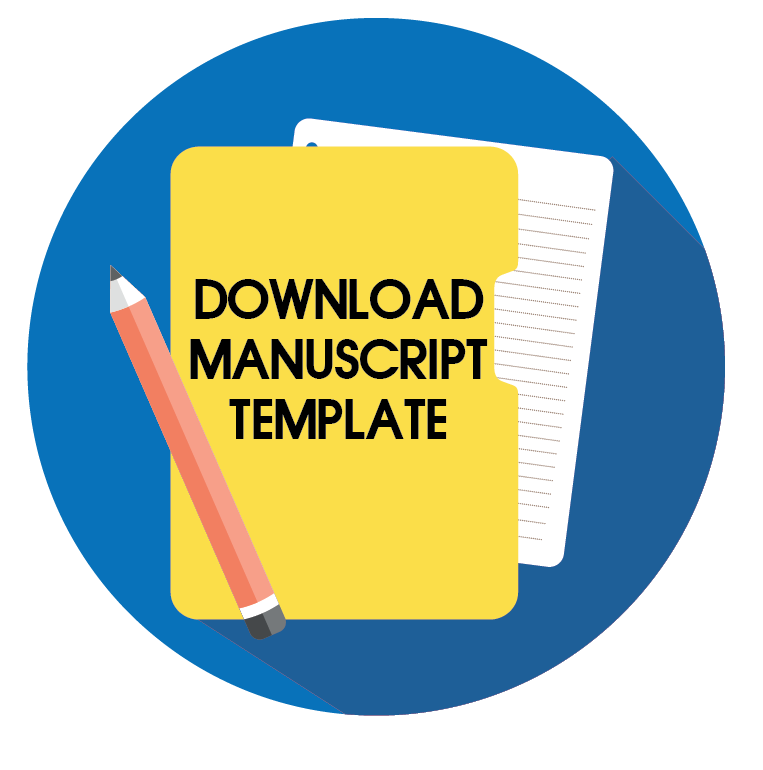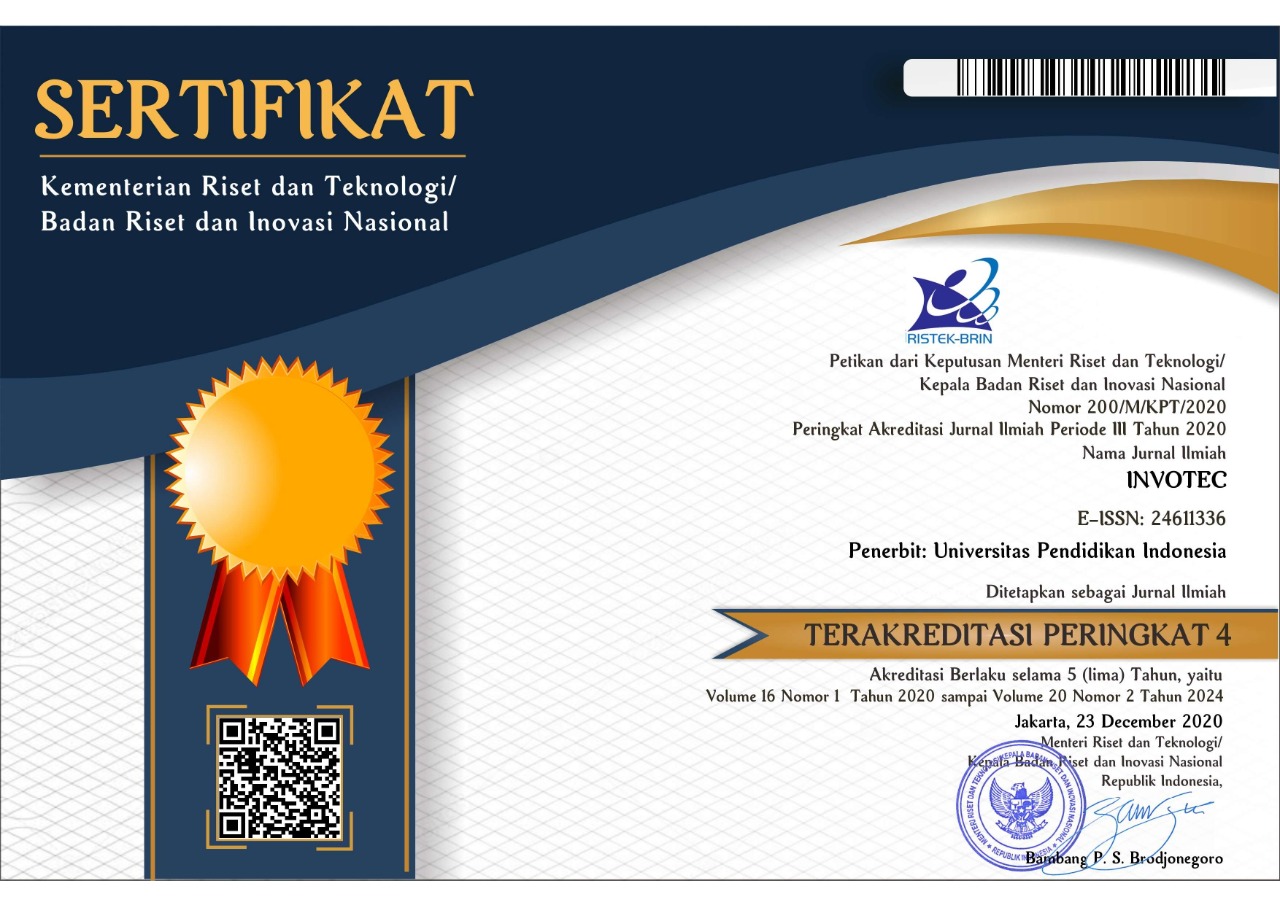Determining priority criteria for using online learning media in Emergency Remote Teaching (ERT) using the Analytical Hierarchy Process (AHP) method
Abstract
Keywords
Full Text:
PDFReferences
Dao Thi Thu, H., & Duong Hong, N. (2021, July). A Survey on Students’ Satisfaction with Synchronous E-learning at Public Universities in Vietnam during the COVID-19. In Proceedings of the 5th International Conference on Education and Multimedia Technology (pp. 196-202).
UNESCO, U. (2020). COVID-19 educational disruption and response. UNESCO.
Kristanto, Y. D., Utomo, B., & Sulistyani, N. (2020). Listening to the student voice on emergency remote teaching during the pandemic crisis. In International Conference on Mathematics and Science Education of Universitas Pendidikan Indonesia (Vol. 5, pp. 7-13).
Saputra, E. R., & Rusmana, N. (2021, July). Students’ experience of online game-based assessment tool during emergency remote teaching. In Journal of Physics: Conference Series (Vol. 1987, No. 1, p. 012012). IOP Publishing.
Hodges, C. B., Moore, S., Lockee, B. B., Trust, T., & Bond, M. A. (2020). The difference between emergency remote teaching and online learning.
Yildirim, K. (2020). Lessons from an exceptional distance education experience. Alanyazin, 1(1), 7-15.
Aswir, S. H. M., & Rosiana, D. F. (2021). Google Meet Application as an Online Learning Media for Descriptive Text Material. Jurnal Studi Guru dan Pembelajaran, Vol. 4, No. 1, 189-193. https://doi.org/10.30605/jsgp.4.1.2021.533
Pratama, H., Azman, M. N. A., Kassymova, G. K., & Duisenbayeva, S. S. (2020). The Trend in using online meeting applications for learning during the period of pandemic COVID-19: A literature review. Journal of Innovation in Educational and Cultural Research, 1(2), 58-68.
Dalalah, D., Al-Oqla, F., & Hayajneh, M. (2010). Application of the Analytic Hierarchy Process (AHP) in multi-criteria analysis of the selection of cranes. Jordan Journal of Mechanical & Industrial Engineering, 4(5).
Cabała, P. (2010). Using the analytic hierarchy process in evaluating decision alternatives. Operations research and decisions, 20(1), 5-23.
Aziz, N. F., Sorooshian, S., & Mahmud, F. (2016). MCDM-AHP method in decision makings. ARPN Journal of Engineering and Applied Sciences, 11(11), 7217-7220.
Pant, S., Kumar, A., Ram, M., Klochkov, Y., & Sharma, H. K. (2022). Consistency indices in analytic hierarchy process: a review. Mathematics, 10(8), 1206.
Saaty, T. L. (2008). Decision making with the analytic hierarchy process. International journal of services sciences, 1(1), 83-98.
Cho, Y. Y., & Woo, H. (2022). Factors in evaluating online learning in higher education in the era of a new normal derived from an Analytic Hierarchy Process (AHP) based survey in South Korea. Sustainability, 14(5), 3066.
Mu, E., Florek-Paszkowska, A., & Pereyra-Rojas, M. (2022). Development of a Framework to Assess Challenges to Virtual Education in an Emergency Remote Teaching Environment: A Developing Country Student Perspective—The Case of Peru. Education Sciences, 12(10), 704.
Saaty, T. L. (1990). How to make a decision: the analytic hierarchy process. European journal of operational research, 48(1), 9-26.
Wang, S., Liu, Y., Song, F., Xie, X., & Yu, D. (2021). Research on evaluation system of user experience with online live course platform. Ieee access, 9, 23863-23875.
Saaty, T. L. (2001). Fundamentals of decision making and priority theory with the analytic hierarchy process (Vol. 6). RWS publications.
Ertmer, P. A., Sadaf, A., & Ertmer, D. J. (2011). Student-content interactions in online courses: The role of question prompts in facilitating higher-level engagement with course content. Journal of Computing in Higher Education, 23, 157-186.
Wang, C. S., & Lin, S. L. (2019). How instructors evaluate an e-learning system? An evaluation model combining fuzzy AHP with association rule mining. Journal of Internet Technology, 20(6), 1947-1959.
Collins, A., & Halverson, R. (2018). Rethinking education in the age of technology: The digital revolution and schooling in America. Teachers College Press
DOI: https://doi.org/10.17509/invotec.v20i1.67952
Refbacks
- There are currently no refbacks.
Copyright (c) 2024 INVOTEC

This work is licensed under a Creative Commons Attribution-ShareAlike 4.0 International License.
This journal provides immediate open access to its content on the principle that making research freely available to the public supports a greater global exchange of knowledge.

This work is licensed under a Lisensi Creative Commons Atribusi-BerbagiSerupa 4.0 Internasional.



